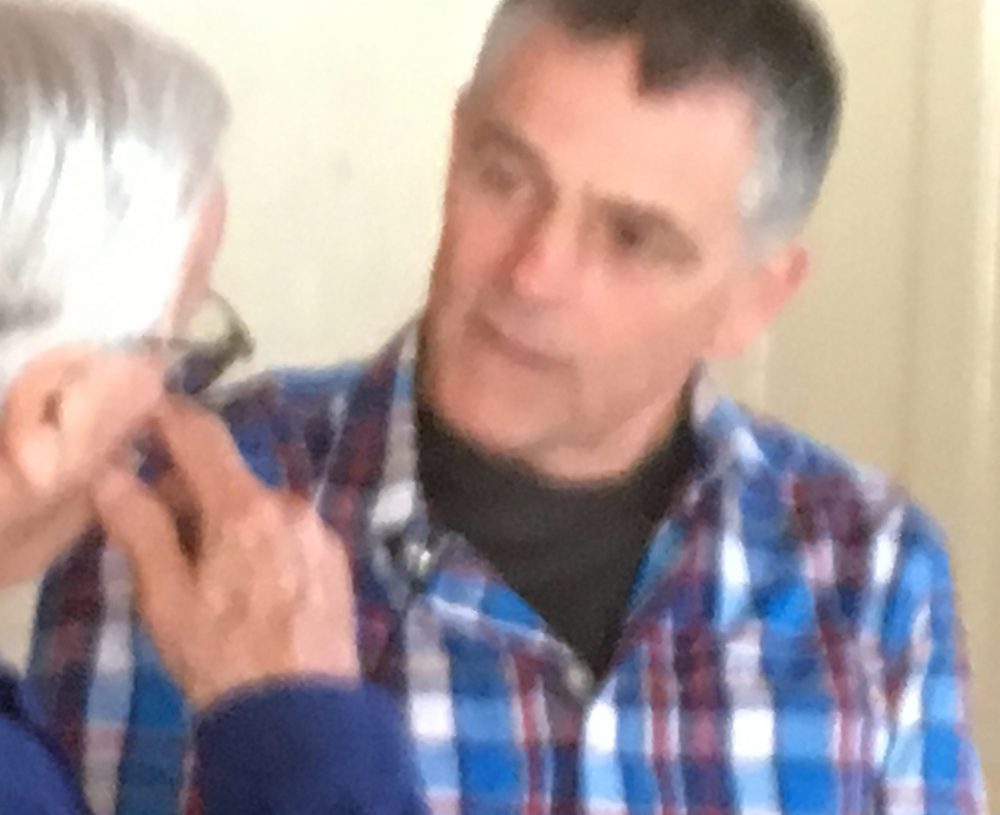The Second Wednesday Society met in the New Hall, Winchelsea on May 9.
Some forty-odd members and guests were enthralled by Colin Page’s illustrated account of two recent voyages round the British Isles.
Entitled “Coasts and Islands” the talk subsumed a range of knowledge and talents from horticulture to ornithology and geology and included an almost unhealthy regard for multicoloured lichens. Whatever the subject matter and whichever the spectacular location the photography was beautifully executed.
The journey was conducted in two parts.The first from the South Coast westward round Land’s End up the west coast via The Hebrides to Orkney and Shetland, and the second leg from Leith on the Firth of Forth down the East Coast ending up in Rye. The various island explorations and photographic forays were conducted, intriguingly, from “voyages in two small ships” by Zodiac Rubber Inflatables.
The images of rocky landfall, choppy water and bouncing RIB certainly conveyed a distinct whiff of Rye’s own David Attenborough.

The first group of Islands visited were the Scillies and the granite outcrops and boulders on Scilly provided the subject for the first photographs. Tresco, the luxury resort island owned and run by the Dorrian-Smith family features a sub-tropical garden containing Canary Island Palms and some fairly spectacular exotics from South Africa and California. This produced some understandable appreciation and colourful photographs of pampered plants. St Agnes produced the first of many images of brightly coloured orange marine lichens and a lone Sea Thrift clinging to a barren rock.
Skomer Island off the Pembrokeshire coast furnished us with the first of recurring images of the always slightly abashed Puffin. I am inclined to think of the puffin as permanently saying, “What?”
Grassholm Island Gannetry, with some 39,000 breeding pairs was our introduction to Gannets, which was to be a theme of the talk.
Anglesey with its folded rock formations and narrow ledges was home to thousands of Guillemots with Razorbills dotted about in the nooks and crannies together with the odd Chough, the rarest member of the crow family.
Rathlin Island, off County Antrim in Northern Ireland, was the next port of call with the nearby Giant’s Causeway neatly segueing to Staffa, Fingal’s Cave and a geological divertissement. Had there been a soundtrack Mendelssohn would have been understandable.

At this point the chronology of the presentation veered dramatically beyond my navigational skills. Strange things happen at sea. There were, however, some glorious pictures of the Skelligs off the Kerry Coast showing recently prominent Star Wars image of Skellig Michael monastery on Great Skellig.
We were soon back in the Hebrides viewing the tranquility of Canna, the iconic Kismuil Castle in Castlebay on Barra and the obligatory picture of an Islander on the strand runway at Eoligarry.

The voyage included a diversion deeper into the Atlantic to visit the UNESCO World Heritage Site of St Kilda, evacuated in the 1930s. Colin gave us pictures of Hirta, Dun, Soay and Boreray showing the steep inhospitable slopes, the cleits and blackhouses in which the inhabitants eked a living. And then, utilising his range of knowledge, photos of the St Kilda Wren, Wheatears, Great Skuas, and a Heath Spotted Orchid. The cliffs and stacks are home to millions of birds, puffins, fulmars and gannets and the archipelago is the largest seabird colony in Europe. Words can arguably paint a picture, the photos enhance these words but according to Colin the sounds, sights and smells of a colony like this has to be experienced with all the senses.
Back on Rhum there were more photographs from the palette of lichens and mosses and then round into the Sound of Mull to Oban to photograph a Hooded Crow. The final photo of this voyage was the exclamation mark of the Old Man of Hoy.
The second leg was more of a romp down the east coast.
The Bass Rock off the East Lothian coast produced more gannets. Then south to St Abb’s Head and the Farne Islands with allusion to the Longstone Lighthouse and the story of Grace Darling and the Forfarshire.
The Whin Sill was referenced in connection with Staple Island and the stacks and photographs of Kittiwakes on impossibly tiny ledges with improbable rotating eggs.

Hurtling southwards past Lindisfarne and Arctic Terns adopting striking aerial poses for the camera, past Bempton Cliffs in Yorkshire with more Puffins, Gannets and Fulmars and on to Flamborough Head and sounding more like the Inshore Waters Forecast by the minute.
Images of The Wash with Brent Geese grazing on the salt marshes in mid-March. Norfolk landscapes with Snipe in the reed beds and Southern Marsh Orchids and Marsh Hellebores dotted about. Finally hurtling past the Seal Colony at Blakeney Point to an image on the Chalk Cliffs at Dover of a Peregrine Falcon which had almost died out but was now resurgent.
I was by this time singularly aware of my appalling ignorance of far too many subjects. The talk ended at Rye Harbour Nature Reserve with a final image of the red roofed black hut.
On my doorstep are Linnets, Wheat Ears, Ringed Plover, Avocets, Red Shanks, Oyster Catchers, Dunlin, Tufted Ducks, Goldfinch, Kingfisher, Stonechat, and Lapwings.
I can now recognise an Orchid but the rest may have to remain “plants”.
Photos: Gerard Reilly, main, and Colin Page



